| Author
|
Mythbusters: Audio Production Special
|
Kaz
IsraTrance Full Member

Started Topics :
90
Posts :
2268
Posted : Sep 1, 2008 17:00:16
|
Well, not really, but I'll start by debunking a few urban legends:
Working in 32 bits has an audible difference to working in 24 bits.
People tend to talk a lot about such things as "dynamic range" when explaining why 32 bits is necessary.
The dynamic range for 24 bit work is 144.48db. The absolute, highest end DAC converters, in ideal studio design, have a 120db signal to noise ratio. That means that not only can DACs not convert 32bit audio, beyond 20bit, all you hear is NOISE. The ultimate hardware solution is not capable of the quality people say "you need".
Advantages of 32bit:
1) 32bit math is easier to work with than 24bit on a computer, therefor, 32bit may actually slightly improve stability issues in badly-coded plugins.
2) Destructive effects (effects which change the character of the sound in irreversible ways) lose a bit of detail in the sound. The most conservative approach is to say that you lose 1 bit of detail for every time you process that - so while 24bit audio will only allow 4 (or more, but we're talking worst case here) different destructive processes on the sound before some detail degredation may become audible on extreme high end systems, while 32bit will offer 12.
Of course, 4 destructive effects should be plenty for mixdown work, and the added cost of using 33% more RAM and HDD space will put more pressure on your system - nullifying and more the gains of working in a PC-friendly audio bit-depth. Bottom line: The thermal noise of electrons bumping against each other in a resistor is louder than -144db. That means that as long as you have a resistor in your system (like in every amplifier, for instance), going beyond 24bit is not only useless, but hardware will LITERALLY never achieve this.
Working in 192KHz has an audible difference to working in 88.2KHz.
This one is much easier. Humans with perfect hearing can't hear above 22KHz. A sampling rate four times as high ensures down to a mathematical certainty that you will hear that perfectly. Anything beyond that is inaudible by definition, we just can't hear those high frequencies or even the influences of neighboring frequencies and the such beyond 88.2KHz.
So, that's it for the first installment. Any other myths you guys want put to the test?
        http://www.myspace.com/Hooloovoo222 http://www.myspace.com/Hooloovoo222 |

|
|
Medea
Aedem/Medea
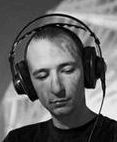
Started Topics :
127
Posts :
1132
Posted : Sep 1, 2008 17:23
|
|
Chemogen
IsraTrance Full Member

Started Topics :
166
Posts :
713
Posted : Sep 1, 2008 17:56
|
The doubling of dBs is not the doubling of amplitude.
My contribution. |

|
|
Medea
Aedem/Medea

Started Topics :
127
Posts :
1132
Posted : Sep 1, 2008 18:09
|
Quote:
|
On 2008-09-01 17:56, Chemogen wrote:
The doubling of dBs is not the doubling of amplitude.
My contribution.
|
|
+6 dB is ;-)
        http://soundcloud.com/aedem http://soundcloud.com/aedem |

|
|
Colin OOOD
Moderator
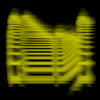
Started Topics :
95
Posts :
5380
Posted : Sep 1, 2008 19:33
|
Quote:
|
On 2008-09-01 17:00:16, Kaz wrote:
2) Destructive effects (effects which change the character of the sound in irreversible ways) lose a bit of detail in the sound. The most conservative approach is to say that you lose 1 bit of detail for every time you process that - so while 24bit audio will only allow 4 (or more, but we're talking worst case here) different destructive processes on the sound before some detail degredation may become audible on extreme high end systems, while 32bit will offer 12.
|
|
This may be the case with fixed-point 32-bit audio, but most systems use 32-bit floating point, which offers FAR more dynamic range than any fixed point audio. This means that keeping audio in 32-bit float format throughout the production process enables much more processing without audible degradation than fixed point formats do, and certainly more than 12, even in a worst-case scenario.
        Mastering - http://mastering.OOOD.net :: www.is.gd/mastering Mastering - http://mastering.OOOD.net :: www.is.gd/mastering
OOOD 5th album 'You Think You Are' - www.is.gd/tobuyoood :: www.OOOD.net
www.facebook.com/OOOD.music :: www.soundcloud.com/oood
Contact for bookings/mastering - colin@oood.net |

|
|
Upavas
Upavas

Started Topics :
150
Posts :
3315
Posted : Sep 1, 2008 19:38
|
|
vegetal
Vegetal/Peacespect
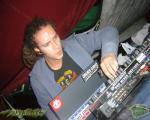
Started Topics :
19
Posts :
1055
Posted : Sep 1, 2008 21:56
|
It would be interesting to see some reference to some of these statements, i mean its no real mythbusting without something to back it up with right, anyone agree?
Quote:
| Working in 192KHz has an audible difference to working in 88.2KHz.
This one is much easier. Humans with perfect hearing can't hear above 22KHz. |
|
I read a test ( think it was SOS) where they let the testsubjects A/B listen ro a 48 Khz and a 96 Khz, it was close to 50/50 which one they preferred. So why would anyone hear a difference between an even higher sampling rate?
Perfect human hearing at 22 KHz? What i´ve read over and over again in general is refered to 20 Hz- 20 Khz. I guess some individuals could hear up to 22 Khz but generally speaking its 20 KHz.
Quote:
|
A sampling rate four times as high ensures down to a mathematical certainty that you will hear that perfectly. Anything beyond that is inaudible by definition, we just can't hear those high frequencies or even the influences of neighboring frequencies and the such beyond 88.2KHz.
|
|
Maybe i misunderstand your last statement but are you saying first that perfect hearing stops at 22 KHz than that we can´t hear above 88.2 KHz? you lost me or maybe im just tired.
        Demand recognition for the Armenian genocide 1915 Demand recognition for the Armenian genocide 1915
http://www.devilsmindrecords.org/
http://www.myspace.com/vegetalmusic
http://www.checkpoint-music.com/ |

|
|
Spindrift
Spindrift

Started Topics :
33
Posts :
1560
Posted : Sep 1, 2008 22:21
|
Seems like the most common myth is that DAW's usually use 32 bit fixed 
32 bit fixed is AFAIK know only used in some DSP processors like SHARC and not in any native software.
The main advantage with 32 bit float is that you do not need to ensure that you optimize you levels since with a floating point system you can change the exponent to scale the amplitude without affecting resolution. So if levels is too low or you have overs that is not a problem since you can correct that before going to fixed precision in the end.
Also if your DAW work in 32 bit float it makes sense to stick with that when recording as well.
I like to be able to record the signal without having to turn up the gain to make use of all the bits as well as not having to worry about overs, and it's nice to not have to do the conversion between 32 and 24 bit when it can be avoided and just do dithering and bit rate conversion when going to the final format for the master.
@Upavas:
Are you sure most plugins are 24 bit....seems odd to me since at least the VST format use 32 bit float for the input and output to the plugin.
I know some plugs use fixed point processing, like for example waves that use 48 bits, but it seems a bit odd to implement 24 bit processing in a plugin for a 32 bit float system.
        (``·.¸(``·.¸(``·.¸¸.·`´)¸.·`´)¸.·`´) (``·.¸(``·.¸(``·.¸¸.·`´)¸.·`´)¸.·`´)
« .....www.ResonantEarth.com..... »
(¸.·`´(¸.·`´(¸.·`´``·.¸)``·.¸)``·.¸)
http://www.myspace.com/spindriftsounds
http://www.myspace.com/resonantearth |

|
|
Kaz
IsraTrance Full Member

Started Topics :
90
Posts :
2268
Posted : Sep 2, 2008 00:01
|
Difference between FLAC and .WAV:
take a wave file, compress to FLAC, decompress and compare the files. EXACT same. There is no difference whatsoever in the waveform. Anyone who says there's a difference - just give'em a blind test and they won't be able to figure it out.
As to the advantages on the destructive audio scale of things - 4 effects should be plenty for mixdown work, and this is totally worst case - it's probably more around 7-10. Up to the mixdown level, I doubt working in 32bit has even theoretical advantages. Of course, it's nice to be beyond sure - but this is overkill on the level of insane paranoia. Theoretically: you won't even be able to hear the said details starting to vanish before you drop under 20bits due to hardware limits (and even then, assuming you're working around 114db above the level of the background noise). OTT's first album was made with each channel running at 16bit 44.1KHz (mixed externally, according to some interview) - and the detail of sound is just fine.
Quote:
|
On 2008-09-01 21:56, vegetal wrote:
Quote:
| Working in 192KHz has an audible difference to working in 88.2KHz.
This one is much easier. Humans with perfect hearing can't hear above 22KHz. |
|
I read a test ( think it was SOS) where they let the testsubjects A/B listen ro a 48 Khz and a 96 Khz, it was close to 50/50 which one they preferred. So why would anyone hear a difference between an even higher sampling rate?
|
|
I added the "neighboring frequencies" comment because we can, in fact, hear the difference between 44.1 and 88.2 KHz due to differences in character (influences of higher frequencies on lower ones and vice versa) - it's mostly something you feel, not something you can put your finger on. That's why I said 88.2 and not 44.1KHz. 88.2/96KHz is basically the theoretical maximum in which you will notice even the most subtle differences. That's why I said 192 is overkill, not double the "standard" rates.
You need at least double the maximum rate to get a frequency properly (one for the positive peak, one for the negative). By doubling the level of interpolation, you make sure that even the finer characters of the sound are 100% accurate within your hearing range - 22KHz maximum hearing, 88KHz sampling rate required for 100% accurate reproduction within those limits - as well as negating possible mathematical irregularities in digital filtering. Technically, 80KHz sampling rate is enough, but the CD standard was selected according to the most generous studies, saying that it may be possible that human hearing can reach 22KHz, doubled. In films it was 24KHz, doubled, just because they wanted to be sure that they sound better than regular CDs. 88.2/96 are just that doubled again, to insure that up to 22050/24000Hz, playback will be accurate down to the most minute detail - even in the most extreme, bizzare and illogical scenarios. Doubling it again is just voodoo, unless you happen to be a bat - in which case, good on ya for learning to read and write.
An anecdote for SHARC processors and most common DSPs: they work in 64bit (double-precision floating point). That is the #1 excuse of DSP card manufacturers not to endorse CUDA (nVidia's programing standard), since graphics cards use only 32bit math (80-90% performance hit in double precision). The actual reason is of course that TC, UAD and the likes just enjoy it when you have to buy their hardware in order to run their unpiratable plugins (considering that a high end graphics card, even with an 80-90% performance hit, is still stronger than another quad-core CPU in these types of processes).
        http://www.myspace.com/Hooloovoo222 http://www.myspace.com/Hooloovoo222 |

|
|
vegetal
Vegetal/Peacespect

Started Topics :
19
Posts :
1055
Posted : Sep 2, 2008 01:10
|
Quote:
|
On 2008-09-02 00:01, Kaz wrote:
I added the "neighboring frequencies" comment because we can, in fact, hear the difference between 44.1 and 88.2 KHz due to differences in character (influences of higher frequencies on lower ones and vice versa) - it's mostly something you feel, not something you can put your finger on. That's why I said 88.2 and not 44.1KHz. 88.2/96KHz is basically the theoretical maximum in which you will notice even the most subtle differences. That's why I said 192 is overkill, not double the "standard" rates.
You need at least double the maximum rate to get a frequency properly (one for the positive peak, one for the negative). By doubling the level of interpolation, you make sure that even the finer characters of the sound are 100% accurate within your hearing range - 22KHz maximum hearing, 88KHz sampling rate required for 100% accurate reproduction within those limits - as well as negating possible mathematical irregularities in digital filtering. Technically, 80KHz sampling rate is enough, but the CD standard was selected according to the most generous studies, saying that it may be possible that human hearing can reach 22KHz, doubled. In films it was 24KHz, doubled, just because they wanted to be sure that they sound better than regular CDs. 88.2/96 are just that doubled again, to insure that up to 22050/24000Hz, playback will be accurate down to the most minute detail - even in the most extreme, bizzare and illogical scenarios. Doubling it again is just voodoo, unless you happen to be a bat - in which case, good on ya for learning to read and write.
|
|
ok in this thread:
http://forum.isratrance.com/the-ultimate-wave-vs-mp3-showdown/page5/
you state how hard it is for a tweeater to play a 20 KHz tone, and yes i know its a pain in the ass to design a circuit for a amp to have amplification and bandwidth.
NOW! Why all this mumbo jumbo about hearing frequencies above our limit if our equipment can´t even reproduce it? Seems like putting a V12 engine into a trabant, it won´t work!.
If the equipment can´t reproduce it, then how can we hear something that isn´t there? To me it sounds like saying -Well yes i can hear the voices in my head can´t you hear them 
Quote:
|
An anecdote for SHARC processors and most common DSPs: they work in 64bit (double-precision floating point). That is the #1 excuse of DSP card manufacturers not to endorse CUDA (nVidia's programing standard), since graphics cards use only 32bit math (80-90% performance hit in double precision). The actual reason is of course that TC, UAD and the likes just enjoy it when you have to buy their hardware in order to run their unpiratable plugins (considering that a high end graphics card, even with an 80-90% performance hit, is still stronger than another quad-core CPU in these types of processes).
|
|
As far as i can see the DSP56367 chip that TC is using is a 24 bit DSP chip.
http://findarticles.com/p/articles/mi_m0EIN/is_2000_Sept_19/ai_65295584
And UA uses ADSP-21369 SHARC Processor for the UAD2 cards which is a 32 bit dsp Processor http://www.freescale.com/files/dsp/doc/data_sheet/DSP56367.pdf
Where are your 64 Bit Dsp-chips? is your conspiracy theory a little flawed?
Im not that into programming dsps but perhaps they can handle 64 bit double floating points just as a 32 bit cpu can handle 64 bit double floats when your programming in C for instance, it just takes longer.
Sorry for sounding alittle harsh but im in a hurry for bed, got work to do tomorrow =)
No beef witcha mate! Cheers!
        Demand recognition for the Armenian genocide 1915 Demand recognition for the Armenian genocide 1915
http://www.devilsmindrecords.org/
http://www.myspace.com/vegetalmusic
http://www.checkpoint-music.com/ |

|
|
OpenSourceCode
Datavore
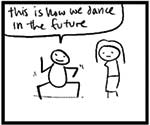
Started Topics :
26
Posts :
660
Posted : Sep 2, 2008 05:50
|
you're confusing khz
almost all humans can't hear above 22khz... that's the frequency (Pitch) of the actual sound. The number of times that the oscillator oscillates per second.
88.2 Khz is the number of times per second that the computer samples 16/24/32 bits (1's or 0's) of information when you bounce down a piece of audio.
totally different parts of the process. |

|
|
ultraviolence
IsraTrance Junior Member

Started Topics :
30
Posts :
194
Posted : Sep 2, 2008 06:09
|
Quote:
|
On 2008-09-02 05:50, OpenSourceCode wrote:
you're confusing khz
almost all humans can't hear above 22khz... that's the frequency (Pitch) of the actual sound. The number of times that the oscillator oscillates per second.
88.2 Khz is the number of times per second that the computer samples 16/24/32 bits (1's or 0's) of information when you bounce down a piece of audio.
totally different parts of the process.
|
|
That sounds more right!
        -------------- Dark & Twisted Night Psy -------------- -------------- Dark & Twisted Night Psy --------------
https://www.facebook.com/Ga73k33p3r-322985384842830/ |

|
|
subconsciousmind
SCM
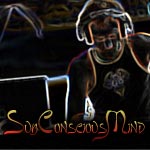
Started Topics :
37
Posts :
1033
Posted : Sep 2, 2008 11:59
|
Opensource, Ultraviolence, I think you didn't get Kaz's point. But im my opinion he is wrong anyway.
Working in higher sampling frequencies is not making sense when talking about highest perceivable frequencies. That may be true. (letting out the fact that a 15khz sinewave only gets 3!! meassuring points when recording in 44khz or 6 in 88khz. In the computer its a triangle which only becomes a sine again due to the filters in the DA!)
But it is making sense to work in higher sampling frequencies in terms of the possibility of more accurate DSP Algorythms. Especially EQ-algorythms can be programmed more accurate for higher samplingfreqs, closer to analog.
As for the AD converters, some people praise higher samping freqs not due to the frequency range, but due to the fact that natural drawbacks from AD can be compensated by recording in higher sampling freqs.
Personally I have the impression that differences
        Most of my music for you to download at: Most of my music for you to download at:
http://www.subconsciousmind.ch |

|
|
subconsciousmind
SCM

Started Topics :
37
Posts :
1033
Posted : Sep 2, 2008 12:32
|
ups..
... that differences araise when the effects multiply. one track, one eq in 96khz.. who cares. ALL tracks, all FX in 96khz... little things still summ up..
Never worked with 192.. but I guess differences are possible too.
        Most of my music for you to download at: Most of my music for you to download at:
http://www.subconsciousmind.ch |

|
|
-aeon-
Aeon
Started Topics :
10
Posts :
546
Posted : Sep 2, 2008 13:02
|
Quote:
| If the equipment can´t reproduce it, then how can we hear something that isn´t there? |
|
as i understand it the argument is made that the presence (or absence) of inaudible frequencies has an effect on the perception of audible frequencies.
i don't really subscribe to this view - when recording individual acoustic violin tracks i've found very little practicable difference between 44.1 and higher samplerates, at least on my setup. for production of dance music i think it's quite an irrelevance compared to (say) sampling bit-depth.
interesting to note that there are software EQs etc that advertise pristine response 'all the way up to Nyquist'. check out Magnus @ smartelectronix's Nyquist EQ.
[edit]
SCM, you must have posted whilst i was typing 
Quote:
| In the computer its a triangle which only becomes a sine again due to the filters in the DA!) |
|
this is where the magic takes place, and the tiny brains of ordinary humans such as myself explode. i can grasp the basics, but once we get to sinc interpolation, reconstruction and filtering my head goes to a blue screen 
|

|
|
|